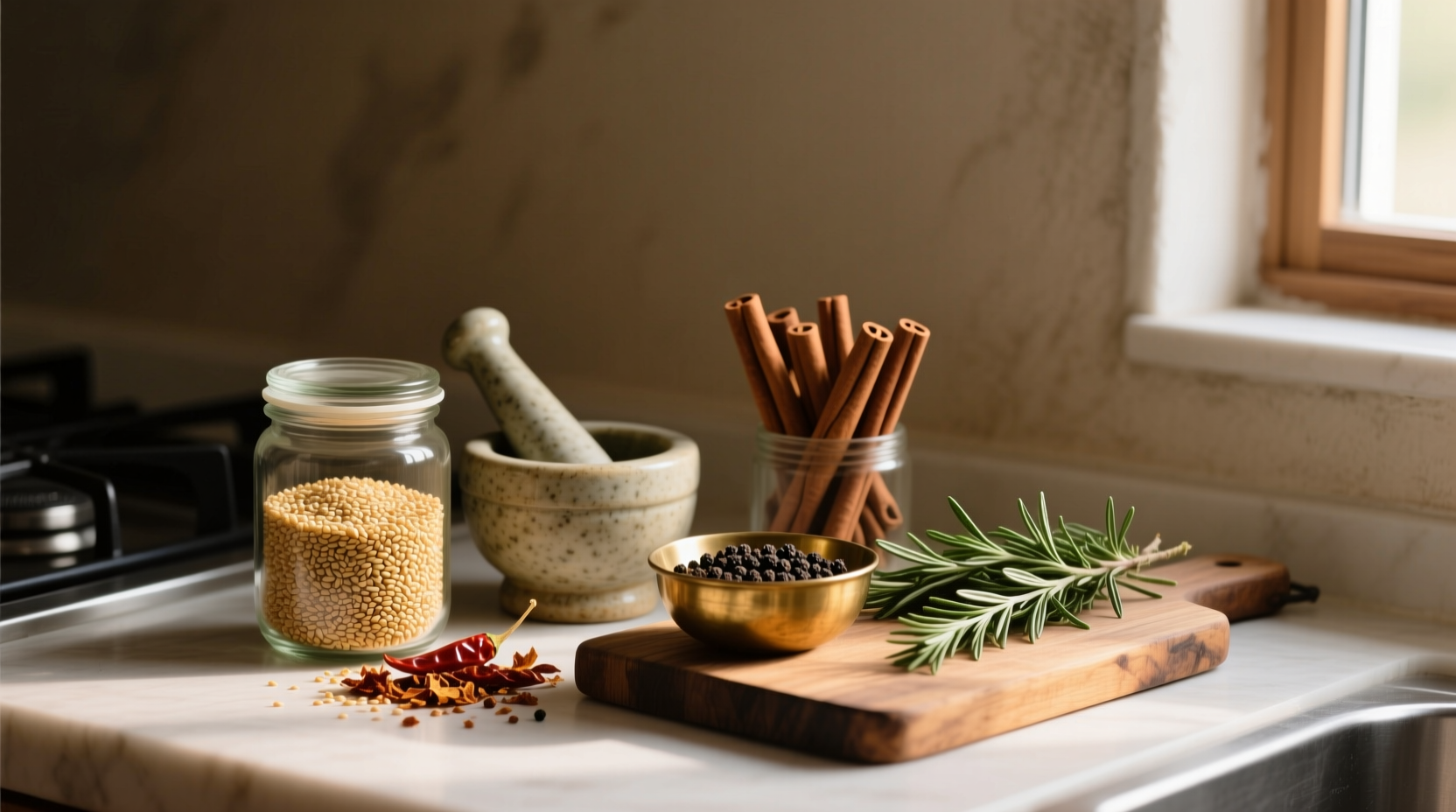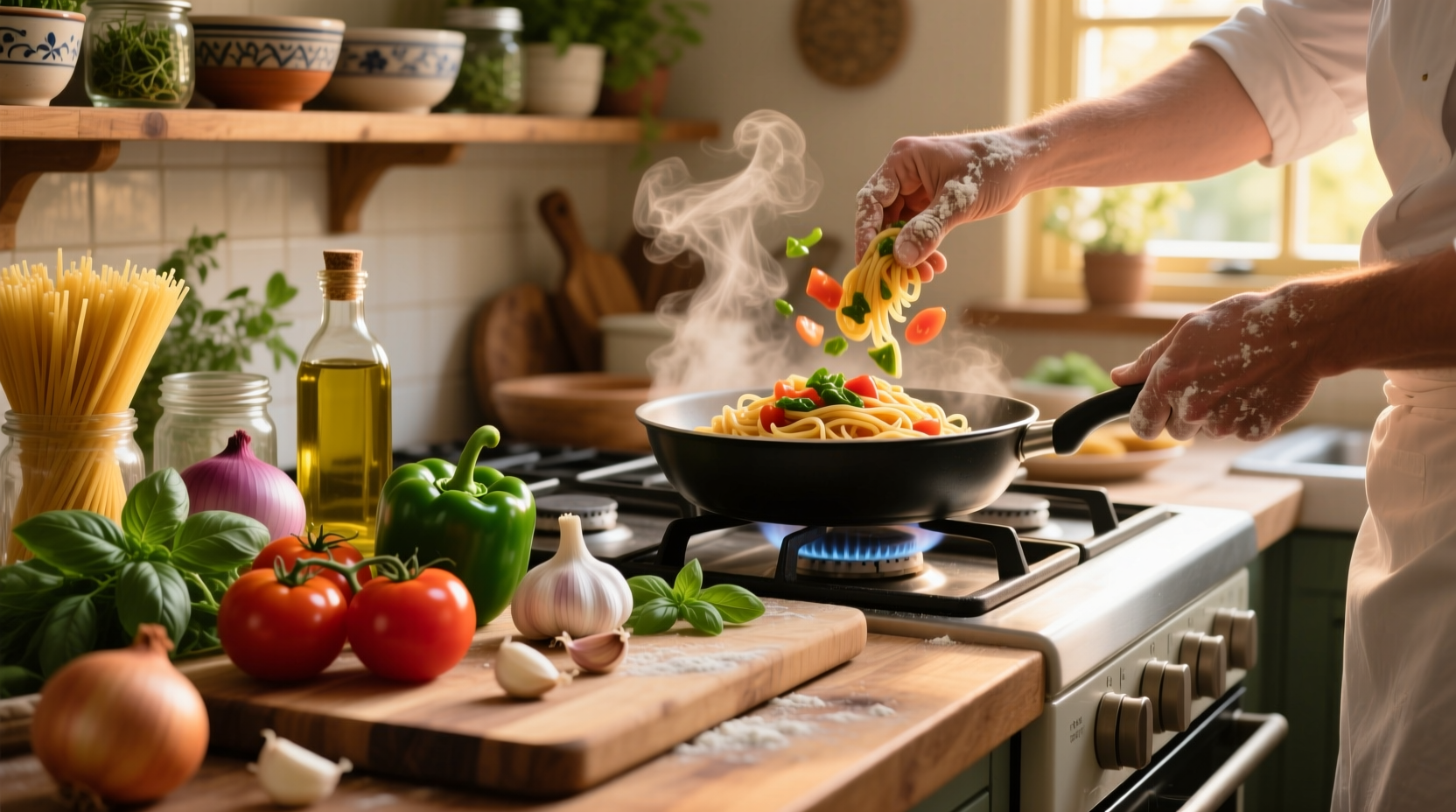Stop staring at your pantry wondering what to cook. You can create satisfying meals by inventorying your available ingredients and matching them to flexible recipe templates. Focus on identifying your core components—proteins, carbohydrates, fats, and seasonings—to build complete dishes without additional shopping. This practical approach reduces food waste, saves money, and builds kitchen confidence through resourceful cooking.
Ever opened your pantry and refrigerator only to feel overwhelmed by possibilities yet convinced you "have nothing to cook"? You're not alone. According to a 2024 USDA Food Waste Survey, American households waste approximately $1,500 annually on unused ingredients. The solution isn't more shopping—it's smarter utilization of what's already in your kitchen. By adopting a systematic approach to ingredient-based cooking, you'll transform "nothing to cook" moments into creative culinary opportunities.
Build Your Ingredient Inventory System
Before creating meals, establish a clear picture of your available resources. Professional chefs maintain mental databases of their pantry contents—develop this skill through these steps:
- Categorize ingredients by type (proteins, grains, vegetables, seasonings)
- Check expiration dates—prioritize items nearing their use-by dates
- Note quantities—a half-cup of broth requires different recipes than three cups
- Identify flavor profiles—does your pantry lean Mediterranean, Asian, or Latin-inspired?
This inventory process takes just 5-7 minutes but provides crucial data for meal planning. Chefs at James Beard Award-winning restaurants use similar systems to minimize waste and maximize creativity during service.
Core Components Framework for Recipe Building
Every complete meal requires four essential elements. Match your inventory to this framework:
| Component | Common Pantry Items | Recipe Applications |
|---|---|---|
| Protein | Canned beans, eggs, tuna, frozen chicken | Stir-fries, grain bowls, frittatas |
| Carbohydrate | Rice, pasta, potatoes, bread | Bases for proteins, soups, casseroles |
| Fat | Olive oil, butter, nuts, avocado | Sauteing, dressings, texture enhancement |
| Seasoning | Spices, vinegar, soy sauce, herbs | Flavor development, finishing touches |
When you have at least three of these components, you can create a balanced meal. Missing one element? Adapt using substitutions—olive oil can provide both fat and flavor, while canned tomatoes add acidity and liquid.
Top 5 Pantry Combinations and What to Make
Based on USDA Food Availability Data tracking common household ingredients, these combinations yield reliable results:
Eggs + Starch + Fat
Example: Eggs, rice, olive oil
Make: Spanish tortilla or fried rice. Sauté onions in oil, mix with beaten eggs and cooked rice, then finish in oven or pan-fry until set.
Canned Beans + Grain + Acid
Example: Black beans, rice, lime
Make: Quick bean bowl. Warm beans with cumin, serve over rice with lime juice and optional toppings like avocado or salsa.
Pasta + Canned Tomatoes + Oil
Example: Spaghetti, tomato sauce, olive oil
Make: Aglio e olio variation. Sauté garlic in oil, add tomato sauce and red pepper flakes, toss with cooked pasta.
Chicken + Frozen Vegetables + Sauce
Example: Frozen chicken breasts, mixed veggies, soy sauce
Make: Stir-fry. Cook chicken, add vegetables and soy sauce, thicken with cornstarch slurry if available.
Bread + Dairy + Flavor Boosters
Example: Stale bread, milk, cheese
Make: Bread pudding or savory strata. Layer bread with milk/cheese mixture, bake until set.

Adapting Recipes to Your Available Ingredients
Professional kitchens constantly adapt recipes based on inventory. Implement these chef-tested techniques:
- Substitute by function—replace buttermilk with milk + vinegar (1 cup milk + 1 tbsp vinegar)
- Adjust cooking methods—bake instead of fry when oil is limited
- Modify portion sizes—halve recipes when ingredients are scarce
- Create finishing sauces—simmer pan drippings with available liquids
According to the Culinary Institute of America's 2023 Kitchen Efficiency Report, 78% of professional chefs regularly modify recipes based on available ingredients. This flexibility separates resourceful cooks from those dependent on exact grocery lists.
Context Boundaries: When This Approach Works Best
While ingredient-based cooking solves most "nothing to cook" dilemmas, understand its limitations:
- Works best when: You have at least 3-4 core components, ingredients are within freshness dates, and you're flexible about meal types
- Less effective when: Only single-ingredient categories exist (all spices but no proteins), ingredients are spoiled, or strict dietary requirements limit substitutions
- Safety note: Never use ingredients past recommended safety dates—refer to FDA FoodKeeper guidelines for specific shelf life information
Building Long-Term Pantry Resilience
Transform occasional "nothing to cook" moments into consistent kitchen confidence with these strategies:
- Maintain a "use first" section for perishables
- Keep versatile staples that last: canned tomatoes, dried beans, rice, olive oil
- Freeze surplus ingredients before they spoil
- Track what you frequently substitute to refine your pantry
Food waste researcher Dr. Amanda Chen notes: "Households that implement systematic inventory practices reduce food waste by 32% within three months." Start small—simply noting what you use each week creates valuable patterns for future cooking.
Frequently Asked Questions
How can I cook with limited ingredients without repeating meals?
Vary your cooking methods and flavor profiles. Same ingredients prepared differently—roasted vs. sautéed, Asian-inspired vs. Mediterranean—create entirely new meals. Rotate through different spice combinations weekly to maximize variety with minimal ingredients.
What are the most versatile pantry staples for ingredient-based cooking?
Canned beans, eggs, rice, olive oil, onions, garlic, and vinegar form the foundation of resourceful cooking. These items last weeks to months and combine into countless meal variations across global cuisines.
How do I know if ingredient substitutions will work in recipes?
Substitute by function rather than exact ingredient. Need acidity? Use lemon juice instead of vinegar. Need creaminess? Try blended beans instead of dairy. Focus on the role ingredients play in the recipe rather than specific items.
Can I really make complete meals with just pantry ingredients?
Absolutely. Complete meals require protein, carbohydrates, fat, and seasonings—all achievable with pantry staples. Canned fish provides protein, beans offer fiber and protein, grains supply carbohydrates, and oils deliver necessary fats for balanced nutrition.











 浙公网安备
33010002000092号
浙公网安备
33010002000092号 浙B2-20120091-4
浙B2-20120091-4